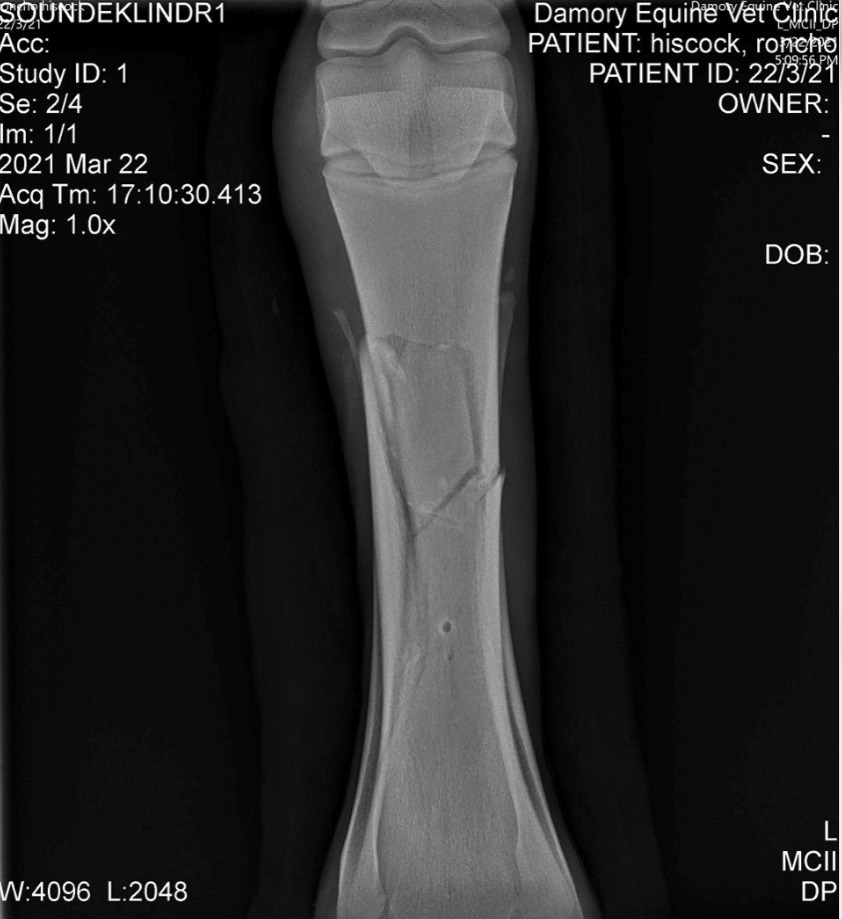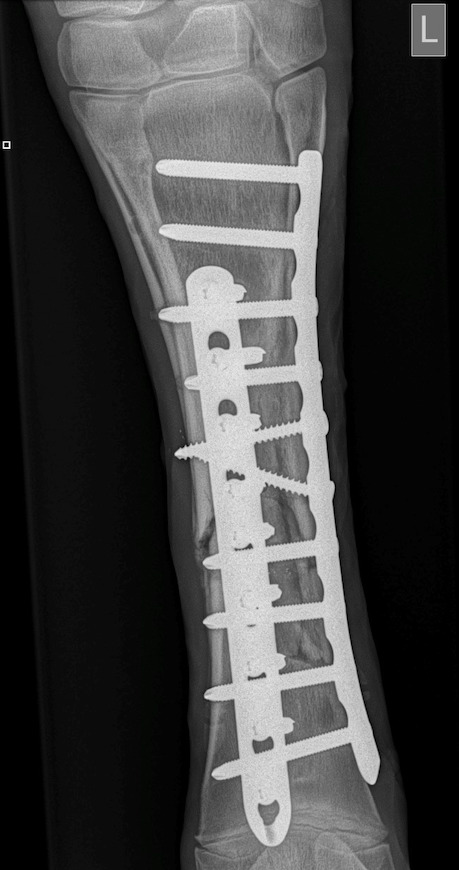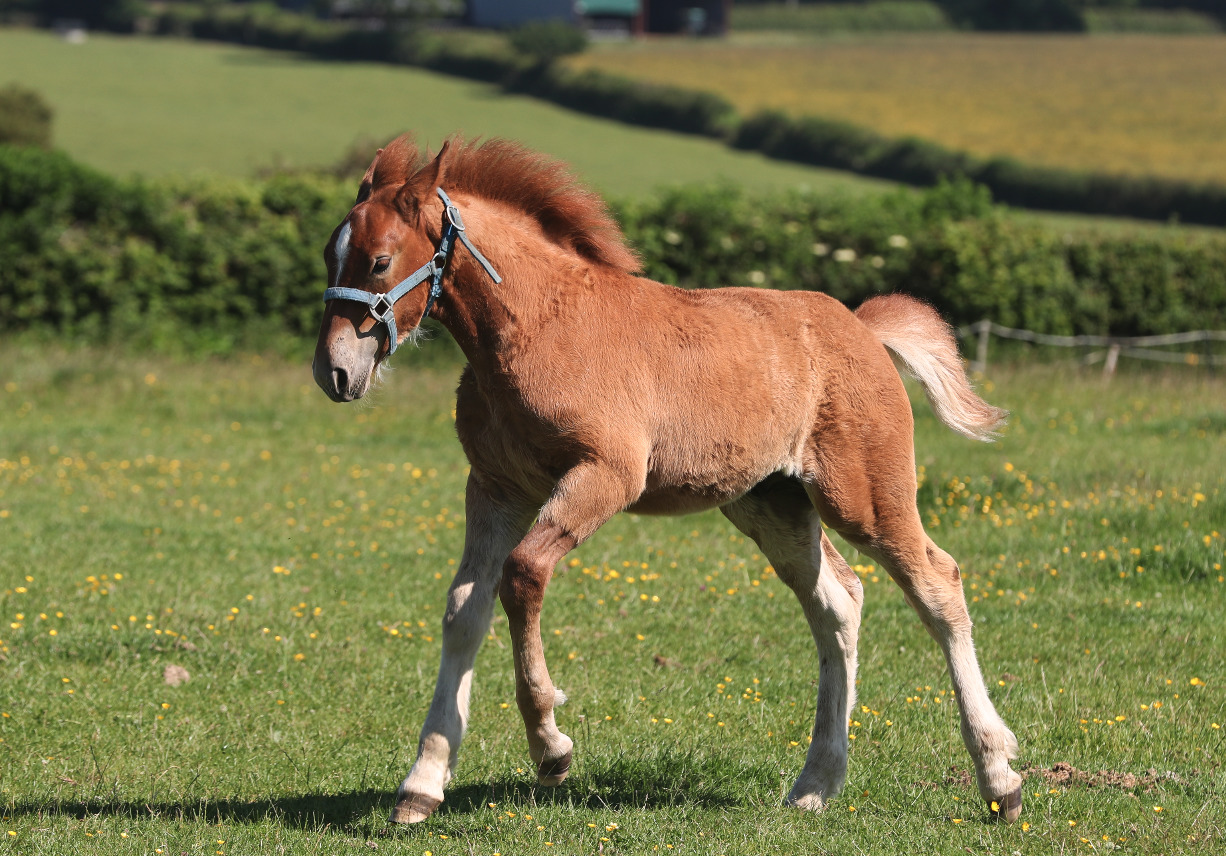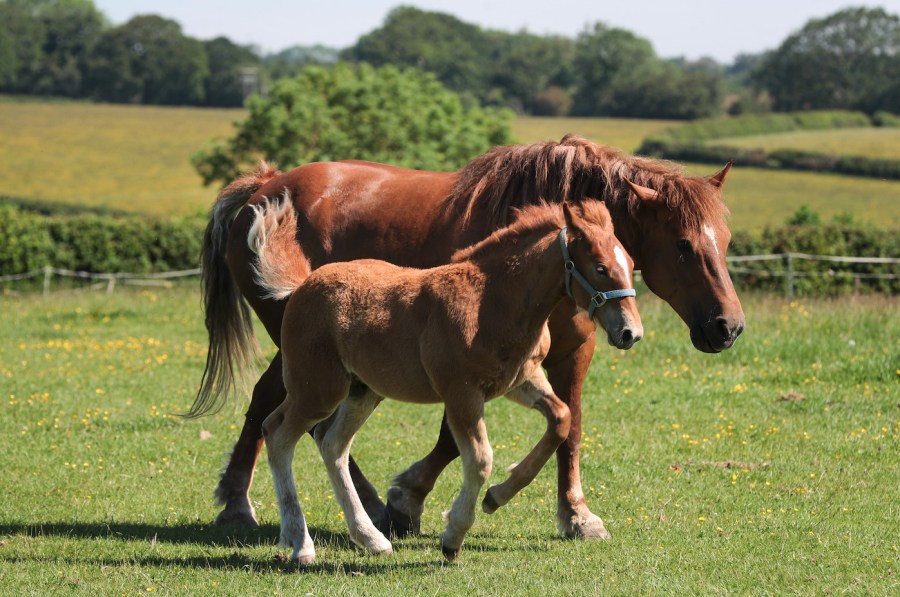A foal who broke his leg in multiple places when he was just two weeks old is recovering well after life-saving treatment at Liphook Equine Hospital.

An X-ray of Rancher’s broken leg. Credit: VetPartners
The Suffolk Punch foal, called Rancher, fractured the cannon bone in his left foreleg while turned out in a paddock with his dam, Montana.
Limb fractures of this severity are often fatal in horses and surgery was the foal’s only chance of survival. His owners, Eugenie and Randy Hiscock, travelled him 80 miles from their home near Shaftesbury, Dorset, to Liphook in Hampshire.
Liphook vet Russell Parker, an RCVS and European specialist in equine surgery, operated on Rancher and said that despite his injury being very serious, he had a fighting chance due to his size and age.
“Rancher’s fracture wasn’t straightforward because the leg was broken in more than two places and the bones were displaced, but foals are relatively light and their bones heal more quickly than adult horses, making fracture repair an option,” said Russell.
“It also helped that there was no wound associated with the injury.”
Rancher’s operation took more than 2.5 hours and he now has two metal plates and 20 screws in the leg.
“The operation involved using metal plates and screws to realign and fix the broken bones,” explained Russell. “The modern implants we use today help us create a more stable repair because the screws lock into the plates as well as the bone.”
‘Very special’

Two metal plates and 20 screws were used. Credit: VetPartners
The operation was a success, but there is always a risk of complications following this type of surgery.
“Our first challenge was to make sure that Rancher got safely to his feet as he came around from the anaesthetic, and we gave him a helping hand to avoid him accidentally damaging the repair,” said Russell.
“Also, there is a risk of the incision getting infected or the implants breaking, but Rancher made excellent progress over the next few days. In fact, he felt so well in himself, he became very boisterous in the stable, but luckily his mum did a great job of keeping him calm.”
Rancher returned to Dorset three weeks later and spent six weeks on box rest. He was turned out again at the beginning of June.
“We can’t thank Russell and the team at Liphook enough for saving Rancher and giving him the best care possible,” said Eugenie Hiscock.
“As well as the Suffolk Punch being an extremely rare breed that needs its numbers boosting, Rancher was the first foal we had bred in four years, so he is very special to us. He is such a lovely, bonny foal and it would have been devastating to lose him.”
‘His leg was swinging’
She added that they the cause of Rancher’s leg break is unknown.

Rancher is healing well. Credit: VetPartners
“We caught and led in the other horses first, and only left Rancher and Montana for a few minutes, but as soon as we got back to the paddock, I could tell something was terribly wrong,” said Eugenie.
“The lower half of Rancher’s leg was swinging. It was horrific. I can only imagine that he twisted round suddenly causing the leg to snap, but it has left us all puzzled.”
A vet from Damory Equine Clinic in Blandford Forum attended immediately and encased the leg a plaster cast, but a follow-up X-ray showed that the fracture wasn’t healing. So the Hiscocks decided to make the two-hour life-saving journey to Liphook.
“We may keep Rancher entire so that he can breed his own foals in the future, or he could be used as a driving horse,” added Eugenie, who runs Donhead Hall Stud with Randy and owns 12 Suffolk Punches, plus four foals of the same breed.
“On the day his accident happened I really thought we were going to lose him, so it is lovely to think that he has an exciting future ahead of him.”









